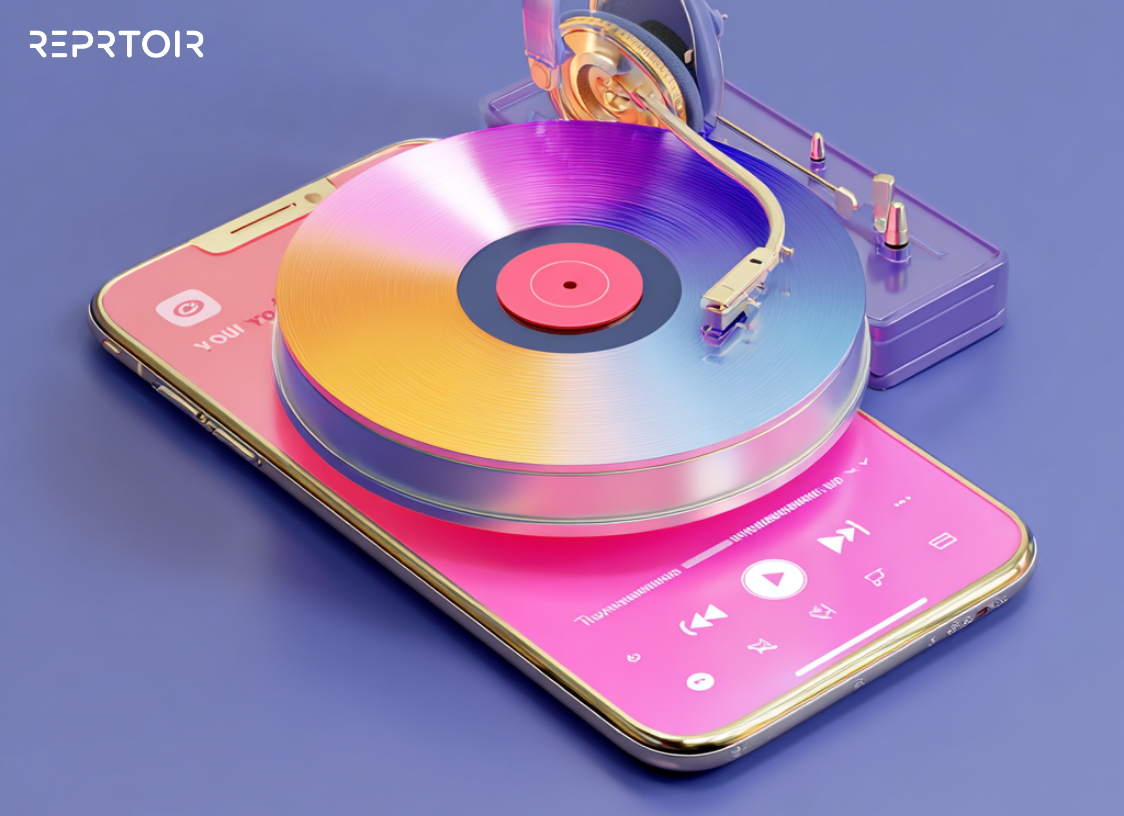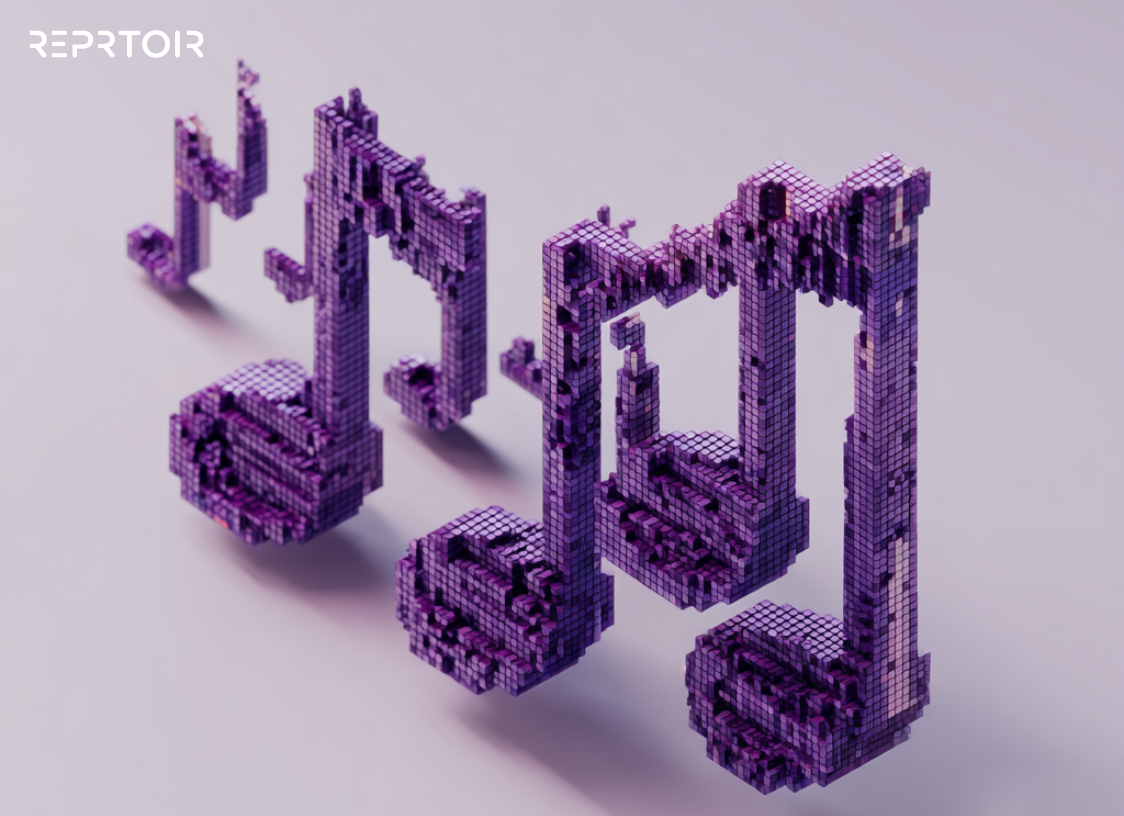Today, most of what gets heard on music streaming platforms is shaped by algorithms. These are systems trained to keep users engaged by recommending music they’re most likely to click on, play, or repeat. Platforms like Spotify, Apple Music, and YouTube Music rely on AI to decide what shows up in your feed. They track your habits, skips, favorites, and even your mood.
Over time, they don’t just reflect your taste—they shape it. So, where does that leave us? How do artists cut through the noise if the algorithm drives what gets heard? And what can the industry do to make sure it still breaks through?
The Rise of the Algorithmic Loop
Behind every playlist, song suggestion, or autoplay is an algorithm that strategically recommends music to keep you listening.
These systems take into account a mix of factors, like:
- Your listening habits — what you skip, save, or share
- The qualities of the song itself — like tempo, energy, and key
- What similar listeners are enjoying — based on shared behavior and taste
This helps the algorithm predict what you might like and what will keep you listening. But these predictions aren’t neutral. As Empirics Asia explains, algorithms don’t just reflect our taste—they shape it through constant feedback loops.
It’s part of a larger shift the author calls a “recursive society,” in which our decisions are influenced by systems that constantly analyze and react to our behavior. You’re shown more of what you’ve already heard. And gradually, your preferences start to narrow.
The algorithm isn’t just responding to your taste—it’s helping construct it. Over time, this can lead to what the American University of Beirut calls the “filter bubble”. This is a space where music discovery becomes less about exploring something new and more about repeating the familiar.
AI’s Fingerprint on Music Discovery
Older algorithms followed simple rules. But thanks to AI, today’s systems learn from your behavior. That makes them better at knowing what you’ll like, but also harder to understand. According to Soundiiz, Spotify has invested millions of dollars to make its algorithm the best on the market.
Streaming platforms use everything from raw audio analysis to user clustering and collaborative filtering to drive music recommendation engines. But the main goal isn’t to help you discover new genres—it’s to keep you listening. That’s why these systems often play it safe, recommending more of what they know you already like.
This shift has made discoverability harder than ever for emerging and independent artists. As algorithms reinforce what’s already working, experimental genres and unfamiliar names get filtered out of the loop. The irony is that these are the very systems that once promised to democratize music.
The Invisible Ceiling Of Discoverability
While we have access to a sea of endless songs, most of us are stuck in personalized bubbles shaped by recommendation algorithms.
That’s a problem, because as AUB Outlook points out, these systems often push mainstream content and make it harder to explore something new.
For artists, this creates an uneven playing field. Even if a song is a great match for someone’s mood, the algorithm might not show it—unless it thinks the listener will engage with it right away. For artists and the teams working with them, the challenge isn’t just making something great.
It’s figuring out how to make the algorithm pay attention.
Can You Work the Algorithm?
The good news is that while these algorithms may seem impenetrable, they’re not entirely beyond influence. In fact, many in the music industry are already leveraging them strategically.
A standout example comes from Music Tomorrow. The publication demonstrates how French artist Vianney boosted his algorithmic reach by over 275% through carefully chosen collaborations.
His team boosted his visibility on Spotify by collaborating with artists who had similar fans and running targeted ads on platforms like Marquee and Meta. That helped him show up more in algorithm-driven playlists like Discover Weekly and Release Radar.
What does this tell us? Discoverability isn’t random. It’s programmable. By understanding your audience clusters and planning releases with the algorithm in mind, you can boost your chances of getting noticed, streamed, and shared.
Avoid the Fake Stream Trap
Many artists, in an attempt to boost visibility, turn to shady “Spotify promotion” services promising guaranteed streams. It’s a tempting shortcut. But more often than not, it leads straight to disaster.
Music Tomorrow warns us: fake streams are shown to pollute the data used by music recommendation algorithms. When people don’t actually engage with the music, or when streams come from the wrong audience, it confuses the algorithm. Instead of helping the artist get heard, it pushes them further down. Even worse, it can permanently damage the artist's algorithmic profile. It makes future promotion efforts less effective.
Streaming platforms are getting better at spotting fake plays, and the consequences aren’t worth it. Your music can be hidden, taken down, or your account could be removed completely.
Looking Ahead: The AI-Curated Future
The next wave of AI in media isn’t just about personalization. It’s about creation. From AI-generated songs to real-time adaptive playlists, the landscape is shifting fast. Soon, algorithms won’t just recommend music. They might actually help make it. For people working in music, that means thinking both creatively and strategically.
The ones who succeed will be those who blend artistic vision with an understanding of how the algorithm works. They’ll make music that connects with real listeners, and with the system behind the scenes.
Recommendation: Cracking the Filter Bubbles
Filter bubbles happen when algorithms keep showing people the same kinds of music they already like. That might sound harmless. But it can limit discovery for listeners and make it harder for artists to reach new fans. Still, they’re not all bad.
If you understand how they work, you can use them to your advantage. Recommendation algorithms aren’t the enemy; they’re the new gatekeepers. And now, artists and teams have the tools to work with them, build momentum, and improve discoverability across every major streaming platform.
Are you ready to take control of your algorithmic destiny? Reprtoir provides the tools you need to navigate the streaming landscape with confidence. From data-driven catalog management to AI-powered analytics, we help you stay ahead in a world defined by algorithms.
Explore Reprtoir today, and make sure your music gets heard by the right listeners, at the right time.










